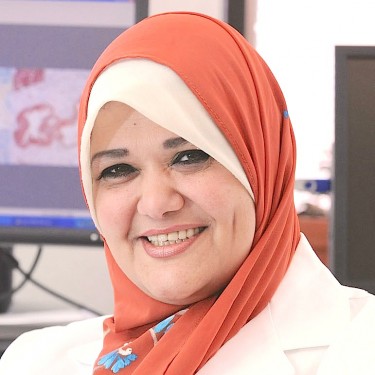
UNE COM has gained national recognition in the past for being ahead of the medical education curve by fully integrating its curriculum several years before other medical schools. UNE COM’s innovation has always come from its faculty, with support from leadership, and often these initiatives are sparked by instincts and interests of our students. In late 2019, NPR produced a story about the differing appearance of common rashes on black and brown skin contributing to misdiagnosis and delayed care. Indeed, the majority of medical education resources teach the appearance of dermatological conditions on white skin as the diagnostic standard. The NPR piece continued to circulate among medical students throughout 2020, and exploded in interest following the Black Lives Matter protests of the early summer. At UNE COM, small groups of students sought resources that would showcase dermatology images as they appear on non-white skin in order to improve their clinical skills to better serve their future patients. “Following the international outcry for social justice in the wake of George Floyd’s murder, UNE COM students felt the need to challenge our knowledge on race in America and race in medicine. Medical education in America does not prepare future doctors to adequately meet the needs of our diverse population. We asked UNE COM faculty to enrich its curriculum by including resources that highlight the diversity in patients’ experiences,” said Student Doctor Anna Lanoue, OMS II. Lanoue and her fellow students brought the resources they found to Dr. Hwyda Arafat, Clinical Professor of Biomedical Sciences. Among the resources, which featured dedicated Instagram accounts and a small number of web sites, was a textbook called “Mind the Gap: a Handbook of Clinical Signs in Black and Brown Skin”, by medical student Malone Mukwende and co-authors. Dr. Arafat contacted UNE librarian Barbara Swartzlander to request the book, who immediately tracked it down and found that it has yet to be published. Dr. Arafat also scheduled time to present the resources and discuss the issue with her colleagues in the Department of Biomedical Sciences in order to ensure that adaptations are made to the UNE COM curriculum to reflect this emerging knowledge base. The session resulted in numerous COM faculty asking for, and receiving, examples and resources for the immediate integration of clinical appearances of black, brown, and white skin in their course materials. Though this subject is so new to medical education the only available textbook has yet to be published, it has already become infused in the UNE COM curriculum. The scholarship of medical education continues flourish at Maine’s Medical School!
Link to news story about the textbook: https://www.cbc.ca/radio/asithappens/as-it-happens-tuesday-edition-1.5657448/medical-student-creates-handbook-for-diagnosing-conditions-in-black-and-brown-skin-1.5657451
Link to NPR story: https://www.npr.org/sections/health-shots/2019/11/04/774910915/diagnostic-gaps-skin-comes-in-many-shades-and-so-do-rashes
Link to Instagram Account @BrownSkinMatters: https://www.instagram.com/brownskinmatters/?hl=en
